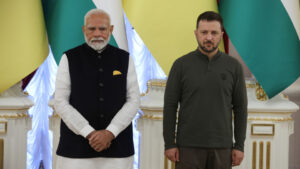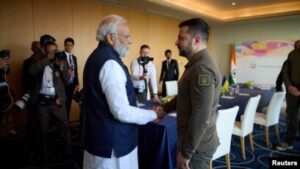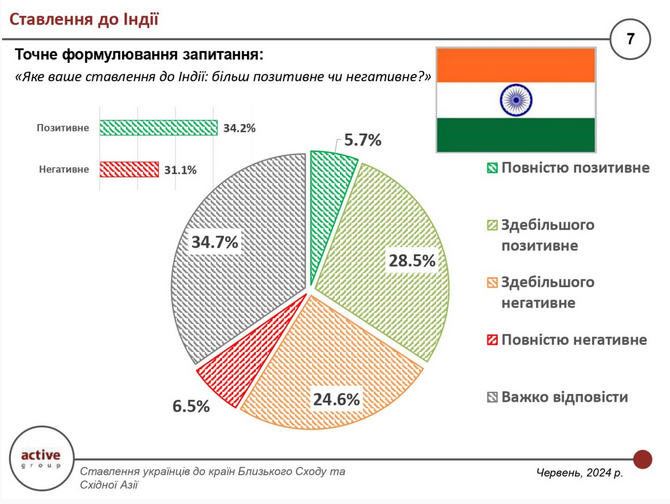
Since the beginning of 2024, medicines produced in India have accounted for 8.3% of the total volume of medicines imported to Ukraine.
The State Service for Medicinal Products and Drug Control (Goslexluzhba) informed Interfax-Ukraine that since the beginning of 2024, 3213 series (32824807 packages) from 65 Indian pharmaceutical manufacturers have been submitted for state quality control, which makes up 8.3% of the total volume of medicines imported to Ukraine.
At the same time during 2022-2023 10924 series of medicinal products manufactured in India were submitted for state quality control, including 4715 in 2022 and 6209 in 2023, which is 54705914 and 51309132 packages respectively.
In addition, the State Service of Medicinal Products with reference to the data of the State Register of Medicinal Products reported that since the beginning of 2024 Indian pharmaceutical manufacturers have registered in Ukraine a little more than 100 drugs (excluding active pharmaceutical ingredients, API – IF-U), currently in Ukraine are registered 1999 drugs manufactured in India, in 2023 in Ukraine were registered 1895 Indian drugs, in 2022 – 1709, in 2021 – 1472, in 2020 – 1165.
Thus, the dynamics of registration of Indian medicinal products in Ukraine over the last five years is slowing down: if the number of registered medicinal products manufactured in India in 2021 was 26.2% higher than a year earlier, then at the end of 2023 – only by 10.9%.

World central banks in July, according to preliminary estimates of the World Gold Council (WGC), increased the amount of gold in their gold reserves by 37.1 tons.
The largest buyers were Poland (14.3 tons), Uzbekistan (9.6 tons) and India (5.4 tons). Jordan (4.3 tons), Turkey (3.8 tons), Qatar (2.3 tons), Czech Republic (1.6 tons), Egypt and Malta (0.1 tons each) also increased their reserves
Kazakhstan (3.9 tons) and Mongolia (0.7 tons) sold gold.
“Central banks have remained committed to hoarding gold in recent months. While the overall level of demand cooled slightly as the gold price continued to rise to new highs, it nevertheless remained positive,” WGC analyst Krishan Gopaul said in a review.

Indian Prime Minister Narendra Modi has invited Ukrainian President Volodymyr Zelensky to visit India “on a mutually convenient occasion,” the relevant 32nd paragraph concludes the joint statement of Ukraine and India following the prime minister’s visit to Kiev.
“It is quite natural that on such occasions he (Modi) extends an invitation, which he did in this case. So we expect that the moment it suits him, President Zelensky will visit India,” Indian Foreign Minister Subramanyam Jaishankar commented on the invitation at a press briefing in Kiev on Friday.
As reported, Indian Prime Minister Narendra Modi met with Ukrainian President Volodymyr Zelensky in Kiev on Friday. This is the first visit of an Indian prime minister to Ukraine since the latter gained independence in 1991.

India imported $3.13 billion worth of gold in July 2024, the country’s Ministry of Commerce and Industry said. This is 11% less than in July last year, but 2% more than in June this year.
Demand for gold in India both this year (the season of purchases – August-December), and in the long term can grow significantly due to the reduction of customs duties, says World Gold Council analyst Kavita Chako. Duties on gold have been reduced from 15% to 6%, on gold doré – from 14.35% to 5.35% – such a sharp decline has never been. Moreover, for almost 11 years the duties have never fallen below 10%. The changes came into force on July 24.
In total for 7 months of the year gold imports to India amounted to $22.234 billion, which is 12% more than the result of the corresponding period last year. India is one of the largest consumers of gold in the world, practically not producing it itself.

Indian Prime Minister Narendra Modi is expected to pay a historic visit to Ukraine in a few weeks, according to Sidhant Sibal, chief diplomatic correspondent for the Indian publishing house WION, citing his own sources in New Delhi. This visit, which is currently being prepared, is tentatively scheduled for the third week of August, probably on the 23rd.
Earlier this year, Ukrainian President Volodymyr Zelenskyy personally invited the Indian leader to visit the country during a phone conversation. Since then, the two countries have been holding active high-level talks. Indian Foreign Minister Subramanyam Jaishankar and his Ukrainian counterpart Dmytro Kuleba discussed bilateral relations. National security advisors from both countries, Ajit Doval from India and Andriy Yermak from Ukraine, also held talks.
In June, Prime Minister Modi met with President Zelenskyy on the sidelines of the G7 summit in Italy. Discussing the current situation in Ukraine, the Indian leader emphasized the need for dialogue and diplomacy, stressing that India is ready to support a peaceful resolution of the conflict.
This visit will be the first personal contact between the two leaders since the beginning of the war, outside the format of the G7 summits. Prime Minister Modi may travel to Ukraine via Poland, and is likely to hold talks with the Polish leadership before traveling to Kyiv.
Prime Minister Modi’s visit to Ukraine comes almost two months after he traveled to Russia for the annual Russian summit, during which the war in Ukraine was also discussed. During his talks with Putin, Prime Minister Modi expressed regret over the deaths of innocent people and children at the Okhmatdyt hospital.

Active Group and Experts Club have conducted a joint study on the attitudes of Ukrainians towards the countries of East Asia and the Middle East. The study was presented at the Interfax-Ukraine news agency in June 2024. The research was presented by Maksym Urakin and Oleksandr Poznyi. The results of the study are as follows:

The results of the survey are as follows:
Completely positive – 5.7
Mostly positive – 28.5
Mostly negative – 24.6
Completely negative – 6.5
Difficult to answer – 34.7%.
Positive – Negative – 3.1
On January 17, 1992, diplomatic relations between Ukraine and India were established
The joint research by Active Group and Experts Club on the attitudes of Ukrainians towards the countries of East Asia and the Middle East was conducted in April-May 2024. It covers such countries as Turkey, Iran, Israel, Egypt, Jordan, Saudi Arabia, UAE, Afghanistan, Pakistan, Azerbaijan, Uzbekistan, Turkmenistan, Kyrgyzstan, Tajikistan, Kazakhstan, Georgia, Armenia, India, China, Republic of Korea, DPRK, Japan, Vietnam, Indonesia, Syria, and Iraq. Full information on the research is available on the website of the Club of Experts at